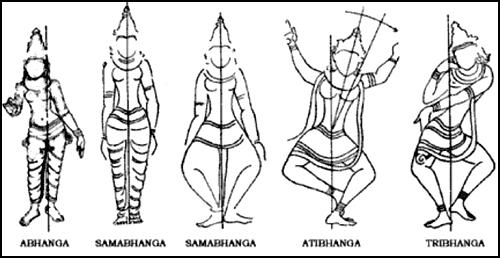Bhangas - the body postures
Like the hatha-yoga, Indian dance is a codified physical training. The body control is significant, as well as the motion control. The dancer is aware of each segment of the body, controls and relearns how they move. Every gesture and every member position is explicit and intentional. Neither of them appears the result of chance. The body is firmly rooted to the ground, the feet are in firm contact with the ground. Pelvis, trunk, limbs and head have their axes clearly drawn.
Four positions, called bhanga, regulate these gestures. The sama bhanga, where the body placed upright in perfect balance represents the serenity of the soul, the ab bhanga where balance on one leg symbolizes meditation, ati bhanga which shift the body denounces violent feelings and finally tri bhanga, which is a triple dip of the body. This position, called a S position, is considered an aesthetic pose par excellence.
Last edited: 05/07/2021
























